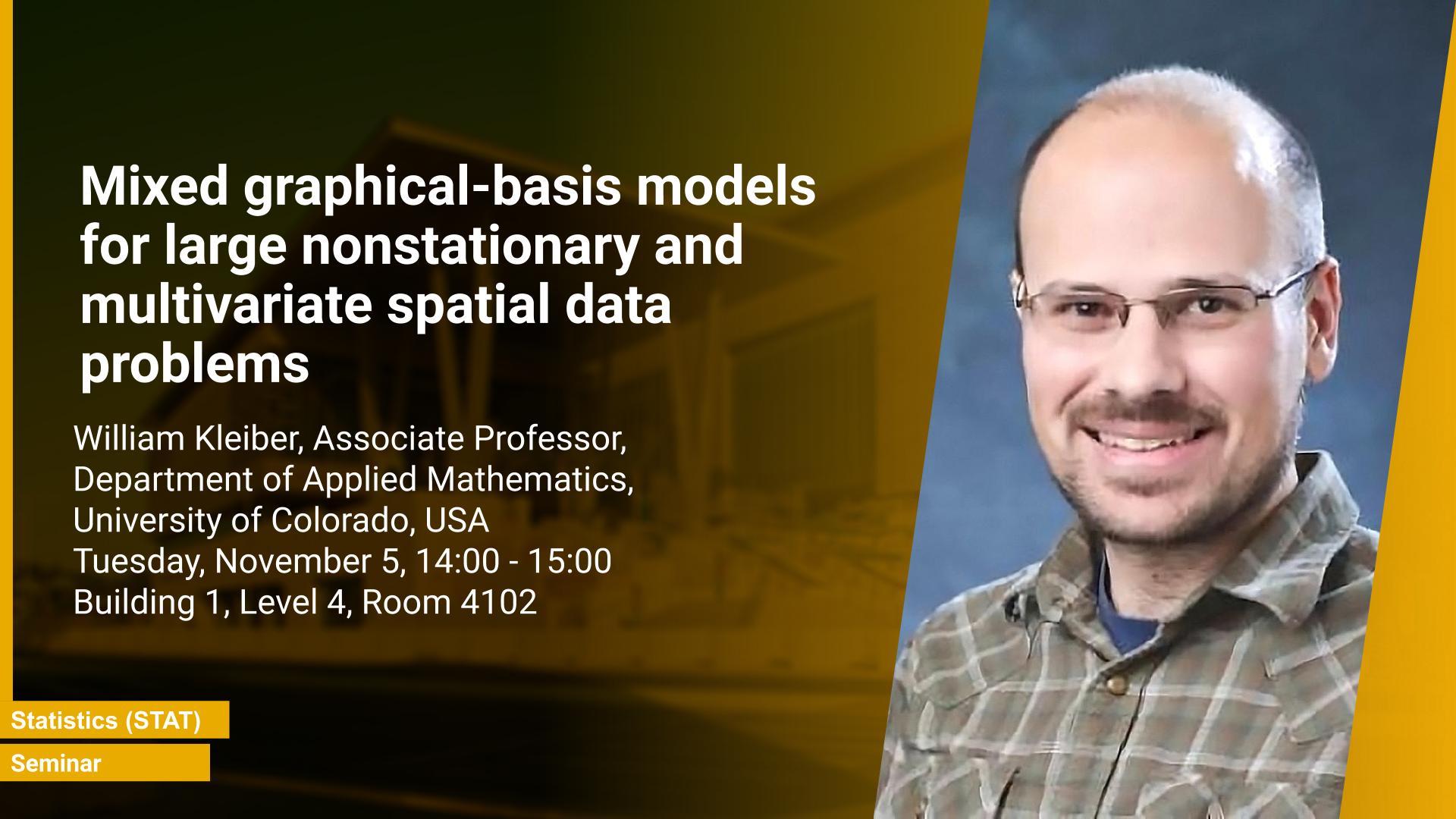Abstract
There is an emerging consensus in the spatial statistical literature that basis expansion models are flexible and useful to model large, nonstationary spatial datasets. Low-rank models, approximate spectral decompositions, multiresolution representations, stochastic partial differential equations, and empirical orthogonal functions all fall within this basic framework. In this talk, we explore a graphical model representation for the stochastic coefficients relying on the specification of the sparse precision matrix. Sparsity is encouraged in an L1-penalized likelihood framework. Estimation exploits a majorization-minimization approach. The result is a flexible nonstationary spatial model that is adaptable to very large datasets. The idea is readily extended to multivariate problems. Illustrations on statistical climatology datasets will be shown.
Brief Biography
Will Kleiber is an Associate Professor of Applied Mathematics at the University of Colorado, Boulder, USA. His Ph.D. is in Statistics from the University of Washington, and he spent two years as a postdoctoral researcher at the National Center for Atmospheric Research with the Geophysical Statistics Project. In 2016 he received the Young Investigator Award from the American Statistical Association's Section on Statistics and the Environment and was a Lebesgue Chair at the Centre Henri Lebesgue, France. His current research interests are in multivariate spatial processes, statistical climatology, and statistics for energy sciences.
